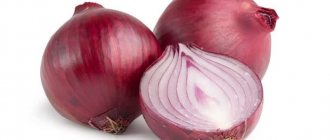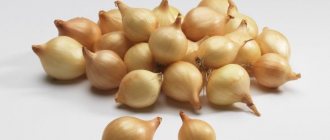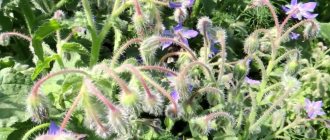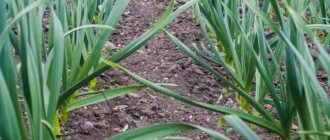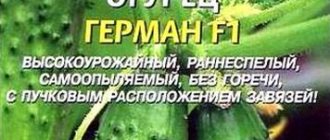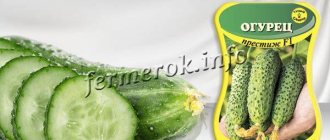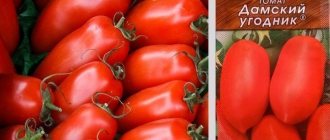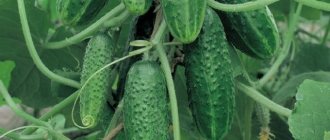Control and prevention of diseases and pests
Important!
Cupido onions are resistant to fungal diseases and pests. Its only threat may be the onion fly.
Signs of damage:
- wilted onion feathers;
- slow growth;
- rotting of bulbs;
- the presence of white worms under the scales.
For pest prevention purposes:
- The soil is dug up after each onion harvest to a depth of at least 20 cm so that the larvae of flies that have settled for the winter end up on the surface and die.
- Alternating onion beds with carrots or planting marigolds near onions will repel onion flies.
- After planting onions before the onset of summer, it is recommended to spray the beds with infusions of pine needles, mint, and fir. The smell of these plants will repel the onion fly.
The following folk methods of struggle help:
- Watering once every 10 days with saline solution: dissolve 250-300 grams of salt in 10 liters of water.
- Watering with a seven-day infusion of dandelions: pour 200 grams of crushed dandelion root into 10 liters of water.
- Watering with a solution of potassium permanganate once every 10 days.
- Sprinkle the beds with a mixture of wood ash, tobacco dust and ground pepper: for 200 grams of ash, a teaspoon of tobacco dust and a teaspoon of ground black pepper.
Among insecticides, highly effective pest killers are ammonium carbonate and the following preparations:
- "Fly-eater."
- "Medvetox".
- "Zemlin."
- "Aktara".
- "Soil."
- "Karate Zeon".
- "Tabazol".
Grown according to all the above rules, the Cupido onion will become not only an indispensable assistant on the table of any housewife, but also an active rescuer from infectious diseases. Advantages such as early ripening, productivity, long-term storage, and disease resistance will not cause much trouble in growing and caring for them. And the advantages of this onion make it possible to grow it not only for yourself, but also for commercial purposes.
Advice from experienced gardeners
Experienced farmers recommend:
- Plant carrots, marigolds or calendula next to onion beds - these plants repel onion flies.
- When the feathers begin to dry out, open the onion bushes a little and pull them up, tearing some of the roots - this has a positive effect on the ripening of the turnip.
- Do not use organic fertilizers during the growing season if the goal of growing onions is to produce turnips. Such fertilizing is only suitable for planting onions on feathers.
Harvest and storage
Cupido F1 is a long-lasting onion, however, in order for stocks to last until the end of winter and not lose their quality, the crop must be properly harvested and prepared. Therefore, there are a number of important rules:
- As soon as the tips of the feathers begin to dry out (usually this happens already in mid-July), the bush must be opened slightly and gently pulled up, tearing some of the roots. This contributes to better ripening of the turnips.
- Harvesting begins after the feather dries and lies on the ground. For Cupido, this period begins towards the end of July or beginning of August. You should not wait for the above-ground part to dry out completely; you can start harvesting until about a third of the tops are on the ground.
- You need to remove the turnip from the ground using a shovel or a special bracket, but under no circumstances try to pull it out with your hands.
- Digging is carried out gradually, first removing every second plant from the row, then removing turnips after one, etc. The final collection is carried out when the entire above-ground part is completely dry.
- After removing the onion from the ground, it should be left in a dry and ventilated place for 5–7 days to dry completely. If the days are dry, you can leave the crop directly in the garden.
- After drying, the dry top must be kneaded and separated from the turnip. Those specimens whose neck remains thick are not suitable for long-term storage, so they should be selected for immediate consumption.
- Next comes repeated drying. It lasts another week, but is carried out at a higher temperature - no less than +30...+35° C. To prevent the onion from “suffocating”, the room must be well ventilated.
- Onions prepared in this way can be stored for long-term storage in a basement, cellar, or attic (optimal temperature conditions are +5...+7 °C). It is best to place vegetables in baskets or wooden boxes in a low layer; you can “braid the turnips” and store them hanging.
The plant adapts perfectly to different climatic conditions, does not require much attention, is almost not affected by diseases and pests, can be grown in almost any possible way, and produces a consistently rich harvest with excellent shelf life. To top it all off, even the most picky gourmet can appreciate the taste characteristics of this onion.
Characteristics and productivity of onions
Of the entire line of onion varieties and hybrids bred in the Netherlands, Cupido F1 is the earliest. From the moment of emergence of seedlings to the complete formation of the head, an average of 75 to 82 days passes. The yield of the hybrid is quite high: from 1 square meter of area you can harvest 4 or more kilograms of onions. Optimally suitable for cultivation in the central zone of the European part of the Russian Federation, as well as in more southern regions. Widely cultivated throughout Ukraine.
Valued for its unpretentiousness, high vitality and rapid adaptability to different climatic conditions. Cupido F1 can be used in all culinary directions where onions may be present. Thanks to its soft and unobtrusive spiciness, it is very convenient to put in salads, add to soups, main courses, snacks and preparations.
Description of the variety
Cupid, as you know, in ancient Roman mythology is the god of love, striking people with his magic arrows. In the original language, the name of this deity is Cupido, which is what the Dutch breeders awarded their new onion hybrid.
The distinctive properties of the Cupido F1 bow are:
| Head weight, g | 110–150 |
| Husk color | Light brown, golden |
| Peel structure | Thin, but holds its shape well and does not tend to peel off |
| Onion structure | Dense, elastic |
| Bulb shape | Round, slightly elongated |
| Flesh color | Creamy |
| Average feather length, cm | 30 |
| Root system | Powerful enough |
| Taste | Medium-hot, very good for salads, can be used in baby food |
Did you know? Onion as a vegetable and as the name of the weapon with which Cupid doomed his victims to the torments of love sound the same only in Russian; among the Dutch, like the English, these are different words (in the Dutch language, respectively, “uien” and “boog” ”, and in English - “onion” and “bow”). Thus, there is really no pun or double meaning in the name of the hybrid.
Advantages
- Like all samples of Dutch selection vegetables, Cupido F1 onion has a lot of undeniable advantages, among which it is worth mentioning:
- high quality seed material (no need to carry out pre-sowing preparatory work with seeds);
- ultra-early ripening;
- presentable appearance and dense structure of the bulb;
- very good keeping quality (very rare for early vegetables);
- good transportability;
- high percentage of ripening (93–99%);
- excellent yield indicators;
- excellent taste characteristics;
- unpretentiousness, lack of difficulties in growing;
- drought resistance;
- the possibility of growing both in open ground and in greenhouses;
- suitability for both winter and spring planting;
- universal purpose of fruits;
- lack of tendency to shoot;
- resistance to many diseases, high immunity against pests.
Did you know? If, after a wasp or bee sting, you immediately rub the stung area with a cut onion, the pain will subside and the swelling will decrease.
Flaws
It is difficult to talk about the shortcomings of the Dutch hybrid. Some sources indicate that Cupido F1 is not sufficiently resistant to cold weather, but this information is not confirmed by gardeners. On the contrary, the hybrid tolerates winter planting well, and in the spring they try to plant it as early as possible, which is quite typical for varieties with a short ripening period. However, when grown in regions north of central European Russia, this hybrid really needs protection from the cold. Sometimes you can find mention that sudden changes in spring temperatures are detrimental to the plant.
Hybrids are always more productive than varietal forms, they grow better, ripen faster, are less dependent on natural conditions, and have higher immunity, but all these qualities are lost already in the second generation, gradually returning to the original parental material. For industrial production, this feature can be considered a disadvantage, since the farmer will have to bear the costs of purchasing seeds or sowing every year.
Important! The “F1” icon next to the variety name means the first generation of a heterotic hybrid - a plant that is in many ways superior to the varieties from which it was obtained. For example, an onion hybrid can be obtained by crossing the mother liquors of two plants - one grown from sets and the second obtained from seeds
The main advantages and disadvantages of a hybrid
Pros:
- high productivity;
- early maturation;
- pleasant taste;
- resistance to bolting, drought, insects and diseases;
- possibility of long-term storage;
- unpretentiousness;
- high commercial quality and transportability.
Minuses:
- low resistance to frost;
- sensitivity to sudden temperature changes in spring;
- impossibility of self-harvesting seeds.
What is the difference from others
A comparison of Cupido with other hybrids is presented in the table.
| Hybrid | Ripening period | Productivity, c/ha | Bulb shape | Bulb weight, g | Taste |
| Cupido | Mid-early | 266-355 | Round | 90-120 | Peninsular |
| Lamika | Mid-season | 302-341 | Widely obovate | 90-100 | Peninsular |
| Legend | Mid-season | 377-593 | Widely elliptical | 90-105 | Spicy |
What does f 1 mean?
This icon after the name of the variety means that we are dealing with a heterotic hybrid. It sounds ominous, but in fact this is the greatest achievement of plant breeding. The secret is that heterosis provides plant characteristics that are superior to the parent material in many respects.
Here is one of the methods used to achieve the effect of heterosis. To obtain a hybrid, the mother plant of a plant obtained from seeds is crossed with a mother plant grown from seed. And a miracle! The yield compared to the original variety increased by 50%; there were undeniable advantages in terms of product marketability and early maturity. Such plants exhibit more powerful growth, better vitality, resistance to disease and sudden weather fluctuations. All this is heterosis.
It would seem that buy f 1 once, and you will have an excellent harvest every year. However, nature decided differently: the heterotic effect tends to fade from generation to generation. It is strongest in the first year of planting.
Description: appearance, features, taste
Cupid onion is an early high-yielding hybrid of Dutch selection . Onion skins are light brown or golden in color. The peel is thin, but not prone to peeling and retains its shape well. The bulbs are round in shape, slightly elongated, dense and elastic to the touch. The color of the pulp is creamy. The height of the feathers reaches up to 25-30 cm. It rarely produces arrows. The root system is well developed. One onion can weigh 130-150 grams.
This onion is harvested 75-85 days after emergence.
The cupido bow has a lot of positive features.
- Early ripening and high yields.
- Excellent taste characteristics.
- Lack of formation of arrows.
- Easy to grow.
- Resistance to diseases and pests.
- Suitable for both spring and winter planting.
- Long shelf life and good shelf life, while taste and appearance do not change.
- High transportability.
The taste of cupid onion is medium-hot , great for:
- salads;
- main courses;
- blanks;
- snacks;
- can be used in baby food.
Agrotechnics of cultivation and care
Chalcedony onions are grown from seeds, which are immediately sown in open ground, or through seedlings. The first method is more suitable for residents of the southern regions, the second is justified in places with a more severe climate, but can also be used to obtain ultra-early products.
Planting of onion seedlings begins approximately 60 days before placing them in the beds. In terms of time, this is February - March. To do this, prepare shallow containers with drainage, pour fertile soil into it and moisten it a little. After keeping the seeds in a solution of potassium permanganate for about 20 minutes (if you use your own seed), they are sown at an interval of 3-5 cm between rows. Then the seeds are sprinkled with a layer of soil 1.5 cm high and again watered through a strainer or sprayed with a spray bottle. The containers are covered with film to better retain moisture and are not removed until germination.
Good seeds from a trusted manufacturer do not require mandatory pre-sowing preparation. They have a high germination rate and are already treated with a contact fungicide. They are usually buried dry in the ground. But for more active germination of nigella and the appearance of friendly shoots, you can soak the seeds for at least 12 hours in a solution of any growth stimulant.
All care for onion seedlings consists of watering, providing additional lighting if necessary, and 1-2 fertilizing with complex fertilizers containing microelements. The time for planting Chalcedony onion seedlings in the garden is April - May.
Well-lit areas of the garden and fertile, light soil with a lot of nutrients and air are best suited for growing Chalcedony onions. Therefore, in the fall, the beds are well-filled with organic matter (rotted manure) and phosphorus-potassium fertilizers are applied. The soil is dug up deeply.
Sowing Chalcedony onion seeds and planting seedlings begins at a soil temperature of 8-10 °C. In the first case, to obtain the heads, furrows 1-1.5 cm deep are first cut in the garden bed, with a distance of 20-30 cm between them. After sowing the nigella, it is covered with fertile soil, and the area must be well watered. To prevent seeds from being knocked out by water, use fine-mesh nozzles on watering cans and hoses or spinners. When the plants have 2-3 leaves, the plantings are thinned out.
Chalcedony onion seedlings for growing on turnips are planted in beds with the same row spacing as when sowing. The distance between plants is chosen independently - from 8 to 10 cm. Onion seedlings are removed from the containers, the roots and leaves are shortened by a third of the length, after which they are planted in open ground and watered well.
To obtain high yields, this onion needs regular watering, especially during the period of growing green mass and the formation of bulbs. Weeding to remove weeds, as well as loosening the soil between the rows, are also necessary. During the growing season, 3-4 fertilizing is carried out, first with nitrogen and then with phosphorus-potassium fertilizers. Good results in the fall are obtained by using complex preparations with microelements. When growing organic onions, chicken manure, mullein and ash are used. 2-3 weeks before harvesting, stop watering the beds.
Harvesting of Chalcedony begins at the end of July or beginning of August, when the bulbs reach the typical size for the variety, bright thin husks are noticeable, and the tops of the plants lie on the ground and begin to dry. Choose a sunny day for work. The onions are carefully dug out with shovels or pitchforks, and then laid out in 1-2 layers on the garden bed. Let it dry for 3-10 days and cut it off. The bulbs must have a neck 4-6 cm high and the roots are removed. Use scissors, a sharp knife or pruning shears.
Storing Chalcedony onions is no different from usual. It needs a temperature of 0-3˚C (or 18-22˚C), air humidity of 80-85%, good ventilation and darkness. Containers can be small boxes, boxes, nets, etc. In an apartment, the best storage place will be an insulated balcony, in a private house - a cellar.
Every experienced onion grower has a goal to maximize the profitability of growing green onions. One of the tasks is to find and buy the best varieties of onions. The bow on the feather must correspond to the main characteristic; it must be multi-bud or multi-lobed. In the nests of which there are several rudiments. The more rudiments there are in the onion turnip, the higher the percentage of feather yield. Which in turn increases the profitability of this business. I suggest you read the article about multi-bud onions.
Video with a review of some varieties of onions. Watch until the end!
https://youtube.com/watch?v=kpV-kWLP0Tk
Planting onion sets in the middle zone
In central Russia, onions are grown in a two-year cultural rotation, obtaining sets from nigella in the first year and only the next season - a large head. The optimal time for planting seedlings in open ground is from the end of April and during the first week of May. If you plant it earlier, the turnip will begin to shoot, which will deteriorate the quality of the head.
But it doesn’t happen from year to year, so you need to choose the planting period not only with an eye to the lunar calendar, but also take into account folk signs. If the bird cherry tree has not yet bloomed by the 20th of April, there is no need to rush into sowing.
Advice. To make onion germination go faster, it is recommended to soak the seedlings in a growth stimulator before planting. This will bring the emergence of seedlings closer by 2 weeks.
It is preferable to grow greens from large-fraction seeds, which are planted in greenhouses in the middle zone in spring and early autumn, and in open beds in the summer. When the feather grows, the onion is watered every 3 days and fed once with a urea solution.
Planting sets
To get excellent yields, it is necessary to cultivate zoned plants. For the middle zone, the best varieties of onion sets are already listed in the table above: these are Sturon, Olina, Radar, Stuttgarter, Red Baron, Hercules, Centurion, Black Prince
You should also pay attention to other, no less interesting varieties
Recommended onion varieties for the middle zone
| Variety | Peculiarities |
| Carmen | · The onion has a good taste with a slightly pronounced pungency. The heads from the sets are round, slightly flattened, of medium density with a weight of up to 120 g; · High-yielding variety with a high content of ascorbic acid. Due to the presence of dry substances, it is well preserved throughout the winter. |
| Stardust | · Valued by gardeners for maximum germination and high yield. The bulbs obtained, although small (30-50 g each), are smooth and round; · The variety is mid-early, so you can safely plant it in open ground in the spring |
| Orion | The hybrid from the shores of Foggy Albion attracted gardeners with its incredibly large heads - about 200 g. The shape of the fruit is round, the variety is early ripening with high keeping quality. |
| Shtur BS-20 | The smooth, round onion is rich in dry matter, so it is suitable for long-term storage without changing its taste. |
| Yucont | Of the early varieties, turnips ripen in 60-70 days. A simplified round purple turnip reaches a mass of 100 g. From 1 sq. m you can get up to 2.5 kg of fruits with a pungent taste. Due to its high shelf life, good presentation, it is popular in commercial cultivation |
More detailed information about growing onion sets will be provided by the “Big Book of the Gardener and Gardener” (edited by Kizim G.A.), which novice summer residents should take into account
In addition to agrotechnical recommendations, the author mentions onion varieties that are worth paying attention to based on the characteristics of your region. Which onion for the garden a summer resident will choose depends solely on his preferences. But the fact that seedlings for propagation should be chosen of high quality is clear
The second factor for successful cultivation is proper planting, the third is painstaking care of the beds. The combination of agricultural technology allows you to avoid onion diseases and pest invasions.
Onion care
All basic care for Golden onions is carried out in the first 8 weeks after planting. 3 weeks before harvesting, stop all manipulations.
Watering and fertilizing
The main attention should be paid to watering. During the first 2 months from the moment of planting, they are carried out once a week.
Watering begins with the appearance of the first shoots. The method of moistening at the root and sprinkling is used. The soil should be moderately moist, but not swampy; You should also not allow the soil to dry out and cause a crust to appear. 3 weeks before the end of the growing season, watering is stopped completely.
The main fertilizing is applied at the time of site preparation in autumn and spring. During the growing season, fertilizers are applied once, 14 days after the sprouts hatch. At this stage, it is best to use a compost-ash infusion: add 1 kg of compost and 400 g of wood ash to 10 liters of water. The liquid is infused for 5 days, then filtered and diluted with water 1:1. For 1 m² of plantings, 10 liters of ready-made working composition are required.
Important! You should not feed onions with fresh manure, otherwise the heads will acquire an unpleasant taste.
Loosening the soil and weeding
An important agrotechnical measure is loosening the soil and removing weeds - this is necessary to ensure access of oxygen to the heads and increase the feeding area.
In addition, loosening and removing weeds helps to avoid uneven distribution of water in deeper layers of soil and protect plantings from the development of fungal infections.
Such manipulations are carried out after watering or rain the next day, when the moisture is absorbed into the soil. After soil moisture has ceased, 3 weeks before harvest, loosening continues at intervals of every 5–7 days.
Plant pests and diseases
Failure to comply with agrotechnical rules leads to the development of diseases such as:
- mildew;
- root collar rot;
- Fusarium
When they appear, you can use 1% copper sulfate concentrate. The composition is sprayed on the plants themselves and the soil underneath them. 10 days after treatment, dusting of wood ash is carried out over the ground and soil.
To prevent such diseases, you should carefully monitor soil moisture and carry out loosening in time.
In addition, an important measure to prevent the spread of infection is the selection of high-quality planting material and timely enrichment of the soil with nutrients.
Among the pests that are dangerous to crops are:
- onion fly;
- thrips;
various caterpillars.
If parasites appear, you should immediately begin eliminating them. To do this, you can use Aktara (dilute according to the instructions).
Preparing the beds and soil
The hybrid is thermophilic, so you need to choose a site for planting it that is sunny but protected from the wind.
The soil should be loose, fertile and neutral acidity.
The main stages of preparing a bed for sowing vegetables include digging up and fertilizing the soil, clearing it of weeds. It is necessary to feed the soil with organic fertilizers .
Description of Cupid's bow
The modern vegetable market offers a huge range of onion varieties and hybrids. A plant called Cupid's onion is worthy of the buyer's attention. Why is he so good? We will provide a full description of the variety and also present some interesting facts.
A little about onion growing
Man took up the fascinating business of onion growing in the fourth millennium BC. This is evidenced by sacred Egyptian images and biblical stories of the Jews and Moses expelled from Egypt. The oldest vegetable is the only one necessary for our health every day.
Onions were nicknamed for their similarity in shape to a turnip. In general, this is a relative of the lily family; the onion flowers in the inflorescence have the shape of a small lily. The diversity of this amazing plant is amazing.
You can choose onion varieties:
- according to ripening period - early or late;
- to taste - spicy or sweet;
- by color - red or white.
Rules for choosing a bow
Taking the first step towards a good harvest, you need to choose the right planting material. Among onions, the Cupido variety is ideal for the middle climate zone.
The excellent characteristics of this onion variety make it a top seller. He:
- ultra-early (81 days from germination);
- productive (the average onion weighs 110 g);
- has a slightly spicy taste;
- excellent in storage (up to 9 months);
- has an excellent presentation.
A high-quality planting onion set should be dry and rustle pleasantly under your hand. The presence of mold or the unpleasant smell of rot is unacceptable; the shape and color must be in accordance with the selected variety. In the case of Cupido, the set has an oblong bulb with a narrow neck of a beautiful creamy golden color. This onion variety is a real find for modern people.
Features of the variety
When storing, preparing and starting planting, it is important to observe the temperature regime. Until spring, onions remain at 5°C
2 weeks before the start of work, it is transferred to a warm room where the temperature is above 17°C. On the eve of planting, the sets are heated on a radiator for 24 hours. At the same time, the soil in the garden bed should be warm, warm up to at least 12°C. Sevok Cupido is well stored, and if these rules are followed, it produces friendly, healthy shoots.
In onion agricultural technology, the method of planting in furrows in rows is used. The Cupido onion variety is planted to a depth of 5 cm. The distance in the row is 10, between the rows is 20 cm. Watering is rare. Harvesting begins when 25% of the bulbs are feathered.
Cupido onion sets are suitable for growing both in open ground and in greenhouses. They also practice planting it before winter. In this case, you should start doing this 3 weeks before the onset of stable cold weather, so that the root system has time to form, but germination does not occur. In this case, the planting depth increases to 10 cm, and the rows also need to be mulched. Pre-winter sets ripen earlier and are stored more successfully.
What does f 1 mean?
This icon after the name of the variety means that we are dealing with a heterotic hybrid. It sounds ominous, but in fact this is the greatest achievement of plant breeding. The secret is that heterosis provides plant characteristics that are superior to the parent material in many respects.
Here is one of the methods used to achieve the effect of heterosis. To obtain a hybrid, the mother plant of a plant obtained from seeds is crossed with a mother plant grown from seed. And a miracle! The yield compared to the original variety increased by 50%; there were undeniable advantages in terms of product marketability and early maturity. Such plants exhibit more powerful growth, better vitality, resistance to disease and sudden weather fluctuations. All this is heterosis.
It would seem that buy f 1 once, and you will have an excellent harvest every year. However, nature decided differently: the heterotic effect tends to fade from generation to generation. It is strongest in the first year of planting.
What you need to know about growing
Onions are easy to grow. It has a short growing season. The most common diseases of the onion family are downy mildew and gray rot. The main pest is the onion fly. If you choose Cupido f1 for growing, then it will be easier to cope with these troubles, if they arise at all.
As gratitude for your work, you can get a friend who will feed you and treat you. Onion phytoncides can defeat tuberculosis, diphtheria, not to mention the notorious cold. Its bactericidal and antiseptic properties have long been used in pharmaceuticals. The description of the variety once again proves that this plant is a real treasure.
Reviews
★★★★★
Valery K., 51 years old, farmer, Krasnodar region. I have been growing onion crops for many years.
But I acquired the Cupido variety only 3 years ago. Onions do not require special conditions that create difficulties - it is enough to weed and loosen them in a timely manner. I don’t even water it in the fields, but I reap an excellent harvest. ★★★★★
Marina Vitalievna, 55 years old, amateur gardener, Moscow region. A neighbor at the dacha recommended Cupido to me; she has been growing this onion for about 5 years. I was pleased with the variety - very tasty and juicy, and most importantly, it does not require care, which is very important for me personally.
Just this summer, an onion fly attacked the onion, and no matter what I did, nothing helped, but then I read that you can mix ground pepper and wood ash and sprinkle it on the plants. She did so - the fly disappeared, although not in 1 day, but nevertheless. Hide
Add your review
The Cupido onion variety is distinguished by its unpretentiousness, high yield, and excellent taste, which is why it is popular among summer residents and farmers. It has an important feature - resistance to drought and disease, therefore it does not require frequent watering or taking measures against diseases and pests.
0
0
Copy link
Growing seedlings from seeds
Golden Semko can be planted with seeds or sets. The first option is recommended specifically in the case of this variety, since it ensures an earlier and more abundant harvest.
Shoots appear in the spring, and you can reap the benefits already in mid-summer. The disadvantage of winter sowing is the need to sow more seeds, since harsh winter conditions involve certain losses. It is recommended to increase the volume of planting material by a tenth.
The process begins with growing seedlings at the end of February or at the very beginning of March. You need to act according to the following algorithm:
- Checking planting material for germination. It is necessary to wrap several seeds in a damp cloth and leave for several days. When 70% of the material has germinated, it is considered suitable for sowing. Less than 50% sprouts means that the seeds are not suitable for planting.
- Disinfection. This stage is necessary as a prevention of possible diseases. For disinfection, you can use a weak solution of potassium permanganate, after soaking the seeds for 18 hours in plain water. Another option is to place the planting material in a fabric bag, immerse it in hot water for a quarter of an hour, and then keep it in cold water for a minute. Afterwards, leave the seeds in a bag for at least a day at room temperature and periodically moisten them.
- Growth stimulation. This stage is optional, but it allows you to speed up and improve the germination of the crop. They usually resort to Kornevin, Ecosil, Biostim, Emistim. The selected drug should be used in accordance with its instructions.
- Preparing the landing site. You can grow seedlings at home in wooden boxes or in greenhouses or greenhouses. Regardless of the chosen method, it is necessary to provide the crop with sufficient lighting, correct temperature conditions and proper care. You need to make grooves in the prepared soil, deepening them to a maximum of 2 cm. Leave 10 cm to the edges of the container or bed, and 5 cm between the rows.
- Planting seeds. It is recommended to leave 1.5 cm between them. This variety should not be planted too thickly.
- Soil compaction and watering. It is better to water the crop with settled water. It should be at room temperature.
- Insulation. The bed or box with the planted seeds should be covered with plastic wrap. It will need to be removed after germination. If a separate container is used, then place it in a warm place - the first days the onion requires 25 degrees.
- Hardening. Carry out while the shoots have not yet appeared. You need to place the containers with onions in a place with a temperature of 12 degrees and keep them for 3 days. If possible, it is worth using additional fluorescent lamps to increase daylight hours for the crop. Seedlings must be taken out into fresh air. At home, this could be a balcony or an open window. Increase the hardening time gradually, starting from a quarter of an hour. You need to start hardening the crop at least 2 weeks before planting in open ground.
- Thinning. This stage is carried out when seedlings appear. There should be 1.5-2 cm between adjacent sprouts.
- Watering. It must be done regularly, at least once a week. The amount of watering depends on the condition of the soil. It should not dry out, but too much moisture is also harmful.
- Loosening. The procedure is carried out to get rid of weeds, better penetration of air and moisture.
- Fertilizer. This stage is not mandatory, but is necessary if the culture is poorly developed. The cause is often weeds. It is necessary to use a urea solution - dissolve 3 g of fertilizer in a liter of water.
In total, growing seedlings takes approximately 50 days from the date of sowing. Planting in open ground occurs in the second half of April after the formation of 3-4 leaves.
How is it stored?
- After removing the onion from the ground, it is necessary to leave it in a dry and well-ventilated room to dry for 5-7 days.
- Then it is sorted, the dry tops are removed and sent for drying again.
- Next, the bulbs are placed in wooden boxes and stored in a dark room with an air temperature of +6-+8 degrees and moderate humidity.
This onion variety has excellent keeping quality and a long shelf life. If storage conditions are met, the vegetable can last until the next harvest (about 9 months).
Cupido onion is very popular among gardeners. The hybrid adapts perfectly to new climatic conditions, is unpretentious in cultivation, resistant to diseases and pests, produces a rich harvest, and has excellent shelf life. And, of course, it is characterized by a pleasant semi-sharp taste, which is appreciated by fastidious gourmets.
Landing technology
Cupido is grown using 2 technologies - open ground sowings and seedlings. Each method has its own planting scheme and cultivation features.
In open ground
If the seedlings are planted directly into the ground, regardless of spring or autumn, you must adhere to the following scheme:
- distance between rows – 18-20 cm;
- distance between heads – 8-11 cm;
- The depth of planting the bulbs is from 3 to 5 cm.
Planting process:
- divide the area into beds - make grooves using garden tools;
- moisten with warm, settled water (you can add Kornevin, Epin - root system growth stimulants);
- allow the liquid to be absorbed;
- press the sets into the ground;
- sprinkle with earth, compacting as much as possible;
- mulch, which allows you to maintain the required level of humidity.
Features of growing agricultural crops
Onion sets Cupido, the description of the variety indicates that it is not suitable for planting in open ground. It can be germinated either under agrofibre or in greenhouse conditions. To harvest a good harvest, the seeds must be prepared. You can check whether they are empty or not in a saline solution. Those seeds that cannot bear fruit will remain on the surface of the solution. Those seeds that have sunk in it should be collected; it is recommended to soak them in a weak solution of potassium permanganate. This will protect the seeds from various diseases. Growth stimulants can also be used. Next, the seeds should dry in a warm place. Poorly dried seeds can become covered with fungal diseases. However, if varietal seeds are of a high class and are purchased at specialized retail outlets, you can skip the disinfection process, since they are processed at manufacturing plants. The packaging with purchased seeds must indicate a certificate from the manufacturer. There are several ways to sprout this type of onion:
- In flat containers;
- In peat cups;
- In snails.
A more common method is the method of growing in flat containers. Germinating seeds in peat cups is also not bad, but more expensive. Already treated seeds should be planted in the container. Land for seedlings can be purchased in stores that sell various agricultural crops. It is recommended to maintain the temperature in the room in which containers with seeds will remain. It is advisable that the temperature does not fall below 18 degrees. At lower temperatures, the percentage of onion germination decreases. The first shoots appear after 6 days. If the sowing was done densely, the emerging sprouts require transplanting.
Cupido onion sets for planting
Sprouted sprouts should be hardened off before planting in open ground. To do this, for some time, which must be increased every day, the room with the seeds is ventilated or the containers are taken out into the open sky or onto the balcony. This is done so that during sudden temperature fluctuations in the soil this type of onion does not die.
It is important to fertilize the soil that will be used for planting Cupido f1 onions and clear it of weeds. For a better harvest, carrots can grow next to the onions. The operation of planting sprouts in open ground can only be carried out at positive temperatures. Otherwise there will be no harvest. The distance between the sprouts should be about 10 cm so that the developing fruits do not interfere with each other. The bulbs are planted to a depth of no more than 5 cm.
Note! Onions do not require abundant watering, so they should receive moisture as the soil dries out. This usually happens three to four times a month. Otherwise, the fruits will become watery, the process of rotting may begin, and accordingly, the yield will no longer be so high. It is recommended to treat seedlings against pests.
Varietal sets can be planted in spring or in the first ten days of November. The diameter of the bulbs intended for planting should not exceed 2.5 cm. The set should be strong in appearance, with golden shiny skin, without damage. Soil preparation involves digging and fertilizing. Organic fertilizers can be used. Fertilizers such as ash, potassium salt or phosphates are also good. You can also mix the soil with hay or dry grass. This will create some insulation for the onion set. The variety is unpretentious to soil, but low-acid, loose soil is most suitable. Clay soil will not allow the fruits to gain weight. It’s good if squash or cucumbers grew in this area in front of the onions. The distance between the onion rows should be at least 15 cm. Also, the site should be located in a sunny place, protected from drafts. When planting onions at the end of autumn, the sets gain moisture and subsequently the fruits acquire a slightly sweet taste.
Regular, or Cupid's Bow
The symmetrical shape of the lips is also called Cupid's Bow: according to scientific research, this is the sexiest and most desirable shape that women strive for and men are delighted with. Happy owners of Cupid's Bow are characterized by prudence: they are calm and consistent, it is difficult to unbalance them and anger them. Such people are the best negotiators, partners and psychologists; they can easily put themselves in the shoes of their interlocutor, so they are always ready to compromise or give practical advice. Meanwhile, they can always stand up for themselves and defend their values. Owners of this lip shape are intellectuals and treat others with respect. It is also believed that they are characterized by healthy optimism and a sense of humor.
Doll lips
Puppet lips with a bow give the deceptive impression that in front of you stands a delicate flower that needs to be protected from the dangers of the big world. Don't be naive: girls with this lip shape can always stand up for themselves. They make strict but fair leaders who demand iron discipline from their subordinates. At the first meeting, the owners of doll lips may seem stern, selfish and withdrawn, but you should definitely get to know them better. Such girls are simply accustomed to keeping their experiences to themselves. They are not iron ladies, they are characterized by compassion and self-sacrifice, and if you earn their trust, you will find reliable support and a devoted friend in them.
You may also like these materials:
Brighter look! Care for the skin around the eyes so they shine and don't look tired
Honey caramel, rainbow opal, dark chocolate and other most fashionable hair colors of autumn 2020
The lower lip is larger than the upper lip
Girls with a plump lower lip and a thin upper lip are real adventurers. For them, life is a series of adventures full of emotions, passions and sometimes dangers. Such girls do not know how to stay in one place for a long time: a working day in the office makes them despondent, so they prefer project work, which involves constantly meeting new people and diverse tasks. These people are the soul and heart of any company; they are sociable, energetic, love to learn new things and take risks. It is believed that girls with such lips are a little flighty in relationships, but this is not entirely true: their chosen one will simply have to take into account that they cannot be forced to sit within four walls and need to constantly feed the fire of their feelings.


